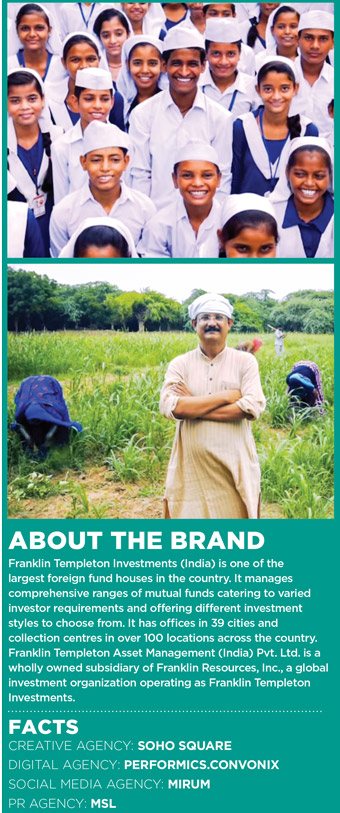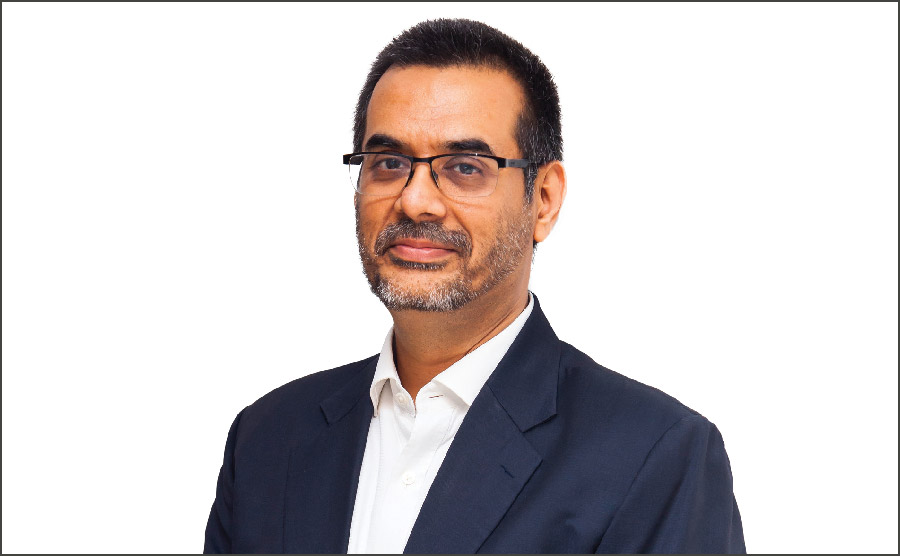We launched ‘Reach for Better’ globally around a year ago and while it’s a global theme, there are different ways of interpreting it for every market. Market situations are quite volatile currently and in such a scenario, it’s difficult to reach out with a message saying ‘reach for better’, because people might find it difficult to connect. We wanted to use the phrase, and yet position it a little differently, so as to be able to use the message for a longer time, so that people could start identifying with the phrase. While you cannot control the brand’s performance, you can control other aspects of what the brand really has to offer. So now it’s not just about strong performance but also about strong ethics, services and our contribution to the community. So, it’s a larger, well-rounded positioning and it’s not just about the consumer too. We have also come out with a lot of communication around investment education and this year, we themed our investment education campaign on ‘reach for better’.
Q] While Reach for Better was a digital-driven campaign, are you planning to take it to other mediums too?
Not right now. Taking it to other platforms is expensive. Currently, the mutual fund industry has approximately two crore investors in India, which isn’t really a very large number. Moreover, the Association of Mutual Funds in India (AMFI) is helping bring about a category expansion with its ‘Mutual funds sahi hai’ campaign which has seen great traction and visibility. As brands, we really want to focus on these 2-3 crore investors who could potentially invest with us or within the industry. While today it’s become much easier to invest than it was some 5-10 years back, there is still a fair amount of documentation and KYC required. For someone to be investment-ready, there are few hoops one needs to jump, and therefore we feel that at this point in time, the digital platform serves our purpose best.
 Q] What kind of investor education programmes have you been coming up with?
Q] What kind of investor education programmes have you been coming up with?We are using a lot of digital to talk to our consumers. We have used TV in the past, but it’s a little difficult to sustain on the platform. AMFI’s campaign has helped start a conversation around mutual funds. I am a part of the ‘investor education’ committee at AMFI, and we are trying to do a lot of things, right from traditional plain vanilla advertising to brand integrations. Today, the fact that WhatsApp forwards with the ‘sahi hai’ tagline are being circulated, and people are talking about it, gives us a sense that people are recognizing mutual funds as a category which is for everybody.
Q] Is the younger generation getting more curious about the category and your products?
Definitely. We recently put out a chatbot on the AMFI website and over 1,00,000 chats have already happened. People are realizing that their money needs to get managed actively. People can always actively manage their portfolio themselves but it’s difficult, considering all of us have day jobs. I don’t look at my investments on a daily basis. I’d be better off if I give it to a collective vehicle like a mutual fund which is cost-effective and actively managed by professionals. Today, mutual funds have a long track record to show. Two of our funds completed 25 years on December 1. Today, investors have enough strong options available, from a mutual fund perspective. There has been a shift. Mutual funds are no longer the last option on a person’s list of investments. It has become a category in active consideration.
Q] Is your target audience primarily the urban population?
Our target audience is anybody who is interested in investing in mutual funds. We have around 40 offices, and we are getting leads from 200 cities, and that’s a massive eye-opener for me. It’s no longer just an urban phenomenon, thanks to connectivity and easier access to information. We launched a platform called the FT Academy about five years ago. At that time, we launched 19 videos in five languages because India is a multilingual country. Information is easily available, which has prompted this whole interest in the minds of consumers to go out and seek information on the product.
Q] You have been using programmatic advertising for some time how. How has that helped the business?
When I look at the $100 that I spend on programmatic versus the same amount I spend on regular search, the RoI that I get from programmatic is significantly higher. It helps us reach the right kind of audience. People coming to us from the programmatic campaign are spending more time. Our lead conversions are far better. From an overall AI space, we have some distance to travel as an industry. Also, these are new-age technologies that are evolving rapidly. Everybody in the industry is making these investments and are bullish about it. We are a foreign brand that has been in India for nearly 25 years now. Digital democratizes your ability to reach and communicate, because then it’s about your content and how effectively you are going to use it to target consumers. If you can do that well, the opportunity becomes pretty much equal.
Q] What would be your broad marketing strategy for the next few years?
A marketing strategy revolves around where the consumer is going - and today, the consumer is moving to digital. We believe that language searches will pick up where people will search for our products in different vernacular languages. So, our approach will be largely dependent on using the digital platforms that are available, investing in them aggressively and trying to make sure that we use our money smartly. Digital will play an important role in our overall marketing strategy and approach going forward.
Q] How different is the Indian market from other global markets?
Today, the employees’ provident fund (EPF) typically gets invested in fixed income instruments, like government bonds. In the overseas markets, investors have the choice of investing their PF money into regular mutual funds. The moment that opens up here, we will see a massive shift. Also, if the industry continues to collectively invest on investor education, mutual funds will become the preferred choice for the next generation of investors. Today, people are far more aware of how the products function, the risks, if any, and how they can be managed. People are now realizing the fact that there is a difference between insurance and investment. Things take time and India is not an easy market to crack, culturally, linguistically and socially. The last few years have brought about a lot of change in the industry and we are now at the cusp of an inflection point in the industry.























